Zerbert
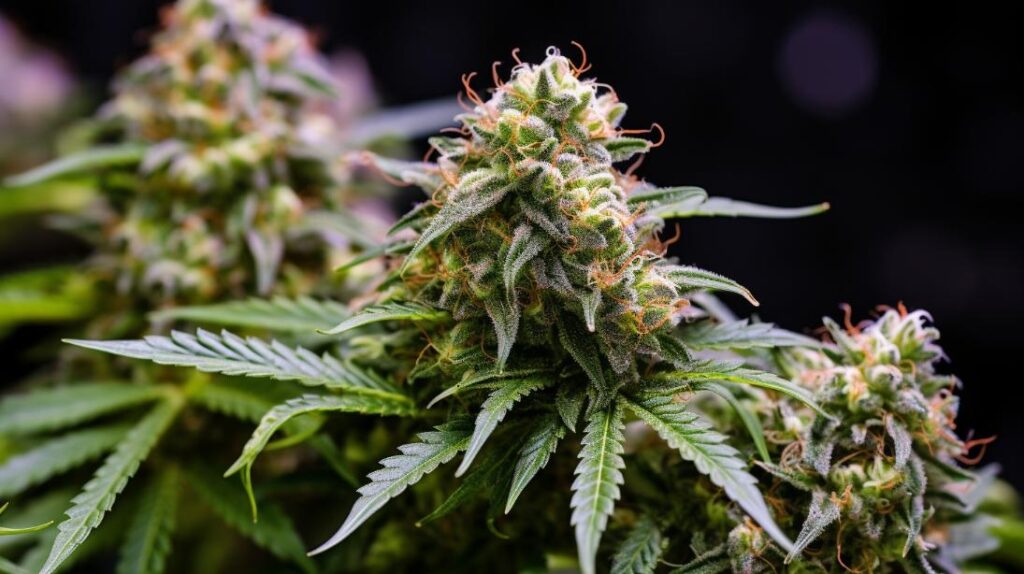
The Zerbert Strain, a compelling hybrid developed by Backpack Boyz through the intricate crossbreeding of Blue Sherbert and Zkittlez, presents a fascinating subject for exploration within the cannabis community. Its balanced THC content of 15% offers a unique combination of uplifting and creative effects, alongside a notable ability to alleviate various physical discomforts.
However, the strain’s genetic lineage, terpene profile, and the dichotomy between its medical uses and potential adverse effects raise intriguing questions. As we consider the broader implications of Zerbert’s popularity, one must ponder the evolving landscape of hybrid strains and their role in both recreational and therapeutic contexts.
Genetic Lineage
The Zerbert strain, a meticulously bred hybrid by Backpack Boyz, emerges from the genetic confluence of Blue Sherbert and Zkittlez, embodying a balanced amalgamation of Sativa and Indica traits. This hybrid strain’s genetic lineage is notable for its sophisticated blend, drawing from the robust genetic pools of its parent strains. Blue Sherbert, itself a hybrid, contributes a complex terpene profile and Indica-dominant effects, while Zkittlez, renowned for its candy-like aroma and Sativa-leaning influence, introduces an uplifting euphoria. The intermingling of these genetics in Zerbert results in a dynamic, balanced hybrid.
The integration of Sativa and Indica genetics within Zerbert’s lineage underpins its multifaceted effects. This hybridization process has been carefully curated to produce a strain that harnesses the desired characteristics from its progenitors. The outcome is a strain that offers a nuanced, multi-layered experience, reflective of its sophisticated genetic makeup. Understanding the genetic lineage of Zerbert is crucial for comprehending its unique aroma, flavor profile, and the potential effects it may induce, showcasing the pivotal role of genetic heritage in determining a hybrid strain’s attributes.
THC/CBD Content
Delving into the Zerbert strain’s chemical composition reveals a THC content that fluctuates between 14% and 19%, coupled with a negligible CBD presence, marked at 0%. This indica-dominant hybrid, with a 60% indica and 40% sativa ratio, is engineered to deliver a balanced blend of physical relaxation and cerebral stimulation. The variation in THC level allows it to cater to a range of users, from those seeking mild relaxation to others desiring more intense euphoric experiences. The absence of CBD, commonly associated with medicinal benefits such as anti-inflammatory and anti-anxiety properties, positions Zerbert as a strain more suited for recreational use or for patients with conditions responsive to THC’s psychotropic effects.
The indica dominance is indicative of the strain’s potential for inducing deep relaxation and sedation, making it an ideal choice for evening use. However, the significant sativa component ensures that the effects are not overly sedating, potentially allowing for use during later parts of the day without complete incapacitation. This balanced indica/sativa ratio contributes to Zerbert’s versatility, making it effective for managing conditions like pain, depression, and stress, primarily through its THC-driven psychoactive properties.
Terpene Profile
Exploring the Zerbert strain further, attention shifts to its terpene profile, where caryophyllene dominates, offering an earthy and fruity aroma that complements its psychoactive properties. Caryophyllene, apart from its aromatic contributions, is recognized for its anti-inflammatory and pain-relieving potential, illustrating the intricate relationship between terpenes and the therapeutic benefits of cannabis strains. This synergy is essential in enhancing the entourage effect, a phenomenon where compounds in cannabis work together to amplify the overall effects.
The terpene profile of Zerbert is not limited to caryophyllene alone; other terpenes such as limonene, linalool, and myrcene also play significant roles. These terpenes contribute to the strain’s unique flavor profile and aid in modulating its effects, thus influencing user experience.
| Terpene | Aroma | Potential Benefits |
|---|---|---|
| Caryophyllene | Earthy, Fruity | Anti-inflammatory, Pain-relief |
| Limonene | Citrus | Mood elevation, Stress relief |
| Linalool | Floral | Anxiety relief, Sedation |
| Myrcene | Herbal | Relaxation, Anti-inflammatory |
Understanding the terpene profile is crucial for users seeking specific effects and flavors, highlighting the importance of terpenes in the holistic evaluation of cannabis strains like Zerbert.
Effects
Zerbert strain’s influence on the human body and mind manifests through a series of potent effects, including relaxation, euphoria, and appetite stimulation, attributed to its specific chemical composition. This strain, with its moderately high THC levels ranging between 14%-19%, exerts a multifaceted impact on users, prompting both a light, tingly body high and a pronounced increase in hunger. These effects underscore the strain’s intricate interaction with the body’s endocannabinoid system, which plays a critical role in regulating mood, pain, and appetite.
The strain’s capacity to induce a relaxing high accompanied by expansive euphoria is particularly noteworthy. This makes Zerbert an ideal choice for individuals seeking relief from the rigors of daily stress or simply looking to unwind during leisurely nights. Additionally, the strain’s efficacy in mitigating chronic pain emerges as a significant attribute, given its calming effects on the body. This is complemented by its potential to alleviate symptoms associated with depression, migraines, inflammation, and stress, further illustrating Zerbert’s therapeutic versatility. The detailed analysis of these effects reveals a complex synergy between Zerbert’s unique chemical profile and its physiological impacts, highlighting its significance as a strain of choice for users with varied needs.
Medical Uses
Building on its complex chemical profile that impacts mood and physical sensations, the Zerbert strain also manifests significant medical uses, particularly in the management of mental health conditions such as anxiety, depression, and stress. The efficacy of this cannabis strain in providing therapeutic benefits is underpinned by its high THC content, which ranges between 14%-19%. This potent cannabinoid concentration is instrumental in modulating neurochemical pathways, thereby exerting anxiolytic, antidepressant, and stress-relieving effects.
Clinical observations and user testimonials highlight that approximately 29% of individuals utilizing the Zerbert strain experience a pronounced reduction in anxiety-related symptoms. This suggests that the strain’s psychoactive and pharmacological properties may facilitate a decrease in the physiological and psychological manifestations of anxiety. Furthermore, 23% of users report notable improvements in depressive symptoms, attributing to the strain’s potential to enhance mood and promote emotional well-being through its interaction with serotonin and other neurotransmitter systems.
Additionally, the calming and relaxing effects attributed to Zerbert aid in stress management for 14% of its users. This underscores the strain’s utility in inducing a state of mental relaxation and physical ease, making it a valuable adjunct in the therapeutic arsenal against stress-induced disorders. The collective data underscore Zerbert’s role as a multifaceted cannabis strain with significant medical applications in mitigating anxiety, depression, and stress.
Flavor and Aroma
Delving into the sensory aspects of the Zerbert strain, its flavor and aroma profile presents a complex amalgamation of sweet, candied berry flavors complemented by fruity, sour, and sweet notes, alongside a distinctly sweet berry scent enriched with hints of citrus and earthiness. This intricate sensory profile makes Zerbert a standout strain for those who appreciate depth in their olfactory and gustatory experiences.
The flavor and aroma of Zerbert are marked by several key characteristics:
- Sweet Candied Berry Flavor: The predominant sweet, candied berry flavor is reminiscent of a blend that includes blueberry, cherry, and other berries, offering a unique and delightful taste.
- Fruity and Sour Notes: These contribute to the complexity of the strain, adding layers that intrigue the palate.
- Blueberry Candy with Citrus Touch: The taste further evolves into a blueberry candy sensation with subtle hints of citrus, enhancing its appeal.
- Earthy Undertones: Grounding the sweetness are the earthy undertones that offer a balance to the fruity and sweet aspects.
- Sweet Berry Scent with Citrus and Earthiness: The aroma complements the flavor profile by echoing the sweet berry notes while introducing citrus and earthy hints for a rounded and engaging sensory experience.
This detailed analysis showcases Zerbert’s ability to provide a rich, nuanced flavor and aroma that are both complex and immensely satisfying.
Appearance
Examining the Zerbert strain’s appearance reveals dark green buds accentuated by deep blue undertones and a generous coating of frosty trichomes, presenting an aesthetically pleasing and distinctive visual profile. The spade-shaped buds are a hallmark of its unique morphology, easily distinguishing Zerbert from other cannabis strains. This distinct appearance not only serves as a visual treat but also hints at the rich flavor profile Zerbert is known for, blending sweet, candied berry flavors with fruity, sour, and sweet notes.
The lineage of Zerbert, crossing Blue Sherbet and Zkittlez strains, plays a pivotal role in shaping its appearance and flavor profile. This genetic background contributes to the strain’s vibrant coloration and frosty appearance, making it visually appealing and suggesting a potent, flavorful experience.
| Characteristic | Description |
|---|---|
| Color | Dark green with deep blue undertones |
| Bud Shape | Spade-like, unique among cannabis strains |
| Trichome Coating | Generous, frosty crystals indicating potency and flavor |
Understanding the appearance of Zerbert is crucial for connoisseurs and enthusiasts alike, providing insights into its quality and hinting at the complex interplay of flavors it promises.
Grow Information
After exploring the distinct appearance of the Zerbert strain, it is crucial to understand the specifics of its cultivation to appreciate the factors contributing to its unique characteristics. The Zerbert strain, known for its adaptability, thrives in both indoor and outdoor settings, but its full potential is often realized in a meticulously controlled indoor environment. Achieving the optimal balance of temperature and humidity is fundamental for its development, underscoring the importance of a dedicated and informed approach to cultivation.
Key cultivation insights for the Zerbert strain include:
- Adaptability for indoor and outdoor cultivation, with a preference for controlled indoor environments where temperature and humidity levels can be precisely managed.
- An average flowering time of 7-9 weeks, during which careful monitoring is essential to ensure the development of its dense, resinous buds characterized by dark green and purple hues.
- Recommendation of topping and training techniques to encourage lateral growth and enhance yields, showcasing the strain’s responsiveness to skilled cultivation practices.
- Resilience to common molds and mildews, offering a level of assurance to novice growers seeking a less labor-intensive cultivation experience.
- The importance of proper nutrient management and regular pruning to not only maximize yield but also to enhance the overall quality of the harvest, emphasizing the role of diligent care in achieving superior results.
Adverse Effects
While the Zerbert strain is celebrated for its unique characteristics and cultivation adaptability, it is essential to acknowledge the potential for adverse effects, such as anxiety, paranoia, and dizziness, that some users may experience. The manifestation of these effects can be attributed to several factors, including the individual’s tolerance, consumption methods, and the chemical profile of the Zerbert strain. Understanding these adverse effects is crucial for a responsible consumption experience.
| Effect | Cause | Management Strategy |
|---|---|---|
| Anxiety | High THC content | Start with low doses |
| Paranoia | Individual susceptibility | Monitor and adjust consumption |
| Dizziness | Sudden changes in blood pressure | Stay hydrated and consume slowly |
| Overconsumption | Limit intake | |
| Lack of tolerance | Gradually build up tolerance |
In light of these insights, it becomes evident that while the Zerbert strain offers numerous benefits, users must approach its consumption with caution. By starting with lower doses and paying close attention to their body’s reactions, individuals can minimize the risk of experiencing anxiety, paranoia, or dizziness. Moreover, understanding one’s tolerance and adjusting consumption accordingly can significantly enhance the overall experience with the Zerbert strain, ensuring that its therapeutic and recreational potential is not overshadowed by adverse effects.
Comparisons with Similar Strains
Often, the Zerbert strain is compared to other potent strains in terms of THC content, indica dominance, and flavor profile, yet its unique lineage and effects set it distinctly apart. With a 17% THC level, Zerbert aligns with many high-THC strains, offering a robust experience for users. However, its 60% indica dominance emphasizes a more relaxing and euphoric journey, differing from more balanced hybrids that might not lean as heavily towards either indica or sativa effects. The flavor profile of Zerbert, marked by sweet, candied berry notes, finds parallels in strains renowned for their fruity and dessert-like tastes, yet it’s the unique combination of Blue Sherbet and Zkittlez in its lineage that bestows Zerbert with an unparalleled taste and effect profile.
-
THC Content: Zerbert’s 17% THC content positions it among potent strains, suitable for experienced users.
-
Indica Dominance: The 60% indica leaning provides a deeply relaxing and happy effect, distinct from balanced hybrids.
-
Flavor Profile: A sweet, candied berry flavor makes it akin to other dessert-like strains, yet uniquely satisfying.
-
Lineage: Originating from Blue Sherbet and Zkittlez, Zerbert boasts a singular heritage that influences its exclusive effects.
-
User Experience: Offers a relaxing, happy, and euphoric experience, paralleling other strains aimed at stress relief but standing out due to its unique genetic makeup.
Research and Studies
Exploring the Zerbert strain further, it is important to note that research and studies specifically focusing on its effects and benefits remain limited. While the parent strains, Blue Sherbert and Zkittlez, have been the subject of some studies, the specific outcomes and benefits of Zerbert itself are less documented. This lack of direct research necessitates a reliance on anecdotal evidence from users to gauge its potential effects and benefits.
Given the complexity and variability among cannabis strains, individual experiences can vary significantly. Therefore, while anecdotal evidence provides some insights into the Zerbert strain’s potential effects, it is not a substitute for scientific validation. Here is a summary of the current understanding based on limited research and user reports:
| Aspect | Description | Note |
|---|---|---|
| Research Level | Limited specific studies on Zerbert; some insights from parent strain studies | More scientific research needed |
| User Experiences | Serve as anecdotal evidence | Varies among individuals |
| Advice | Consultation with healthcare professionals recommended | For personalized advice on usage |
History and Origin
Introduced in November 2020, the Zerbert strain represents a noteworthy development in the cannabis industry, combining the distinct flavors of Zkittlez and Sunset Sherbert with a hybrid genetic profile that leans towards indica dominance. This innovative blend has positioned Zerbert as a unique and sought-after variety among cannabis enthusiasts and connoisseurs alike.
- Genetic Composition: Zerbert is a hybrid strain with a 60% indica dominance, meticulously bred from Blue Sherbet and Zkittlez strains. This combination ensures a balance between relaxation and subtle stimulation.
- THC Content: With a THC level hovering around 17%, Zerbert offers a moderate potency that caters to both experienced and novice users, promoting a non-confrontational and gradual high.
- Unique Flavor Profile: The strain is celebrated for its unique flavor profile, merging the candy-like sweetness of Zkittlez with the creamy berry notes of Sunset Sherbert, providing a delightful sensory experience.
- Visual Appeal: Zerbert boasts deep purple hues, contributing to its distinctive appearance and enhancing its appeal in the market.
- Indica Dominance Effects: The indica-leaning genetic makeup of Zerbert ensures a relaxing experience, making it an ideal choice for evening or nighttime use, when unwinding is paramount.
The technical, detailed, and analytical approach to the development and characteristics of the Zerbert strain underscores its significance in the evolving cannabis landscape.
Frequently Asked Questions
What Strain Is Zerbert?
The inquiry pertains to the classification and characteristics of a particular cannabis variety. The Zerbert strain, known for its distinctive flavor profile, requires specific cultivation tips for optimal growth and compares uniquely to the Gelato strain.
What Is the Gassiest Strain?
The gassiest strain is distinguished by its pronounced fuel-like aroma, achieved through optimal cultivation methods enhancing its terpene profile. A comparison of gas effects reveals strong sedative properties, with flavor profiles exploring deep, pungent notes.
What Is Wiz Khalifa’s Strain Called?
Wiz Khalifa’s strain, known as Khalifa Kush, exemplifies the growing popularity of celebrity-branded cannabis. This indica-dominant hybrid, cultivated with Wiz Khalifa’s input, showcases the appeal of hybrid strains with its high THC content and potent effects.
What Strain Is Coochie?
The ‘Coochie’ strain, while not widely recognized, necessitates thorough verification of its terpene profile, hybrid classification, and adaptability to indoor versus outdoor cultivation methods, underscoring the importance of a detailed, analytical approach to its exploration.

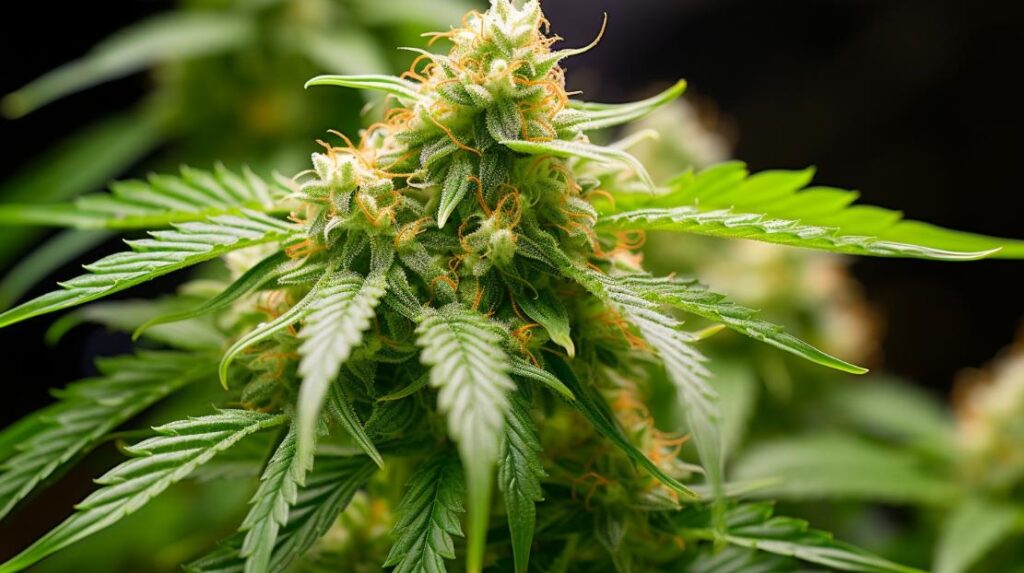
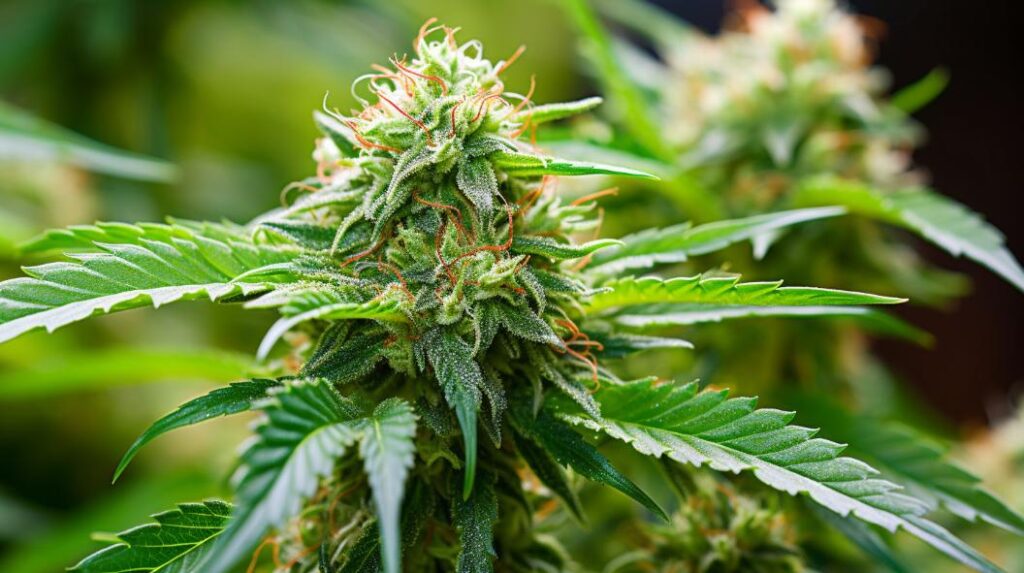
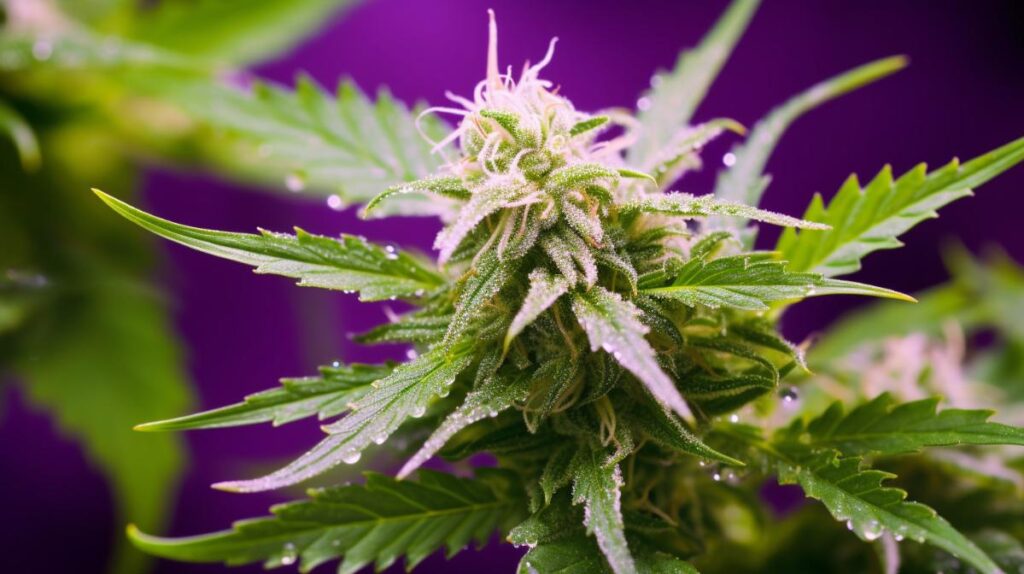
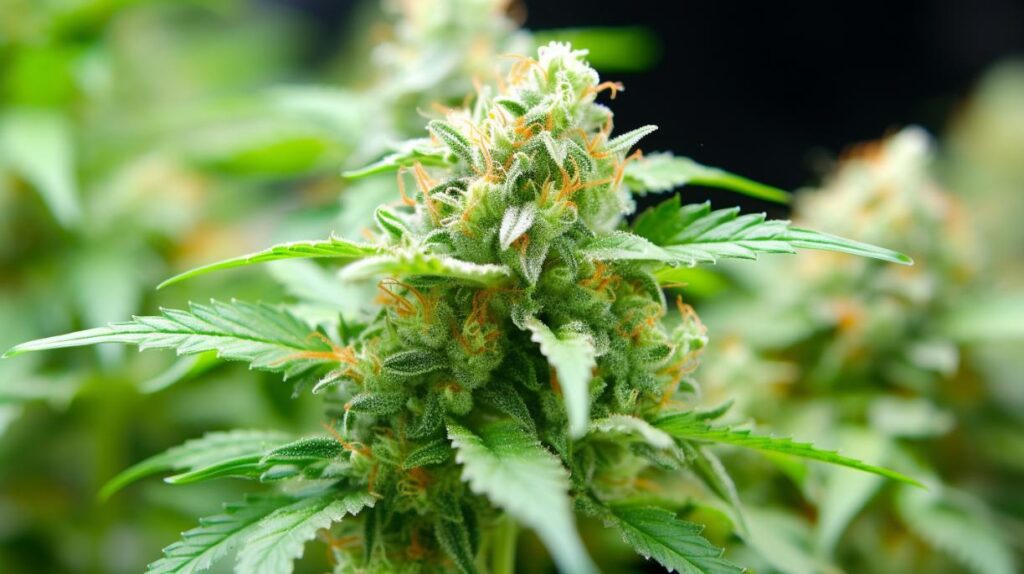
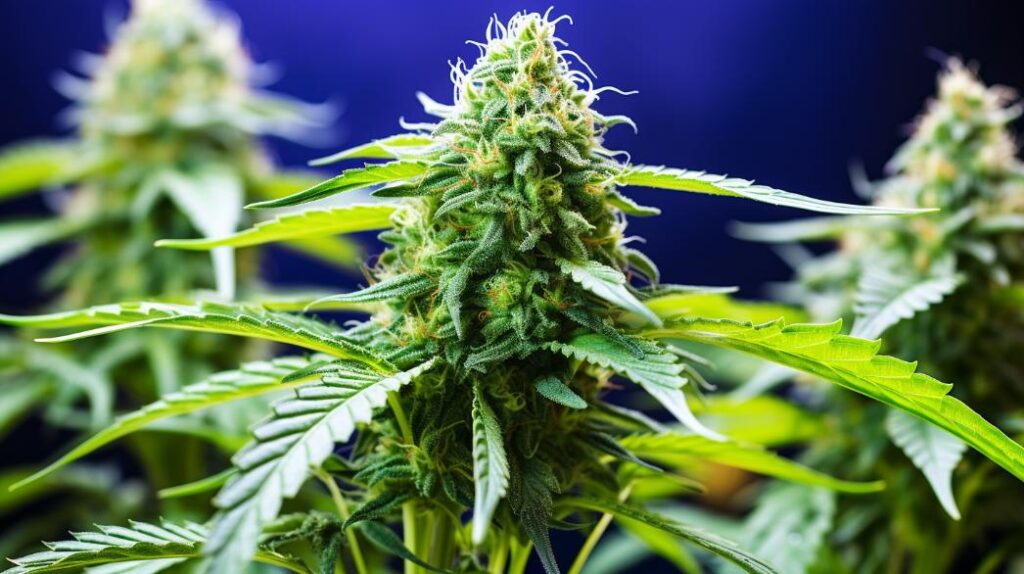

Responses